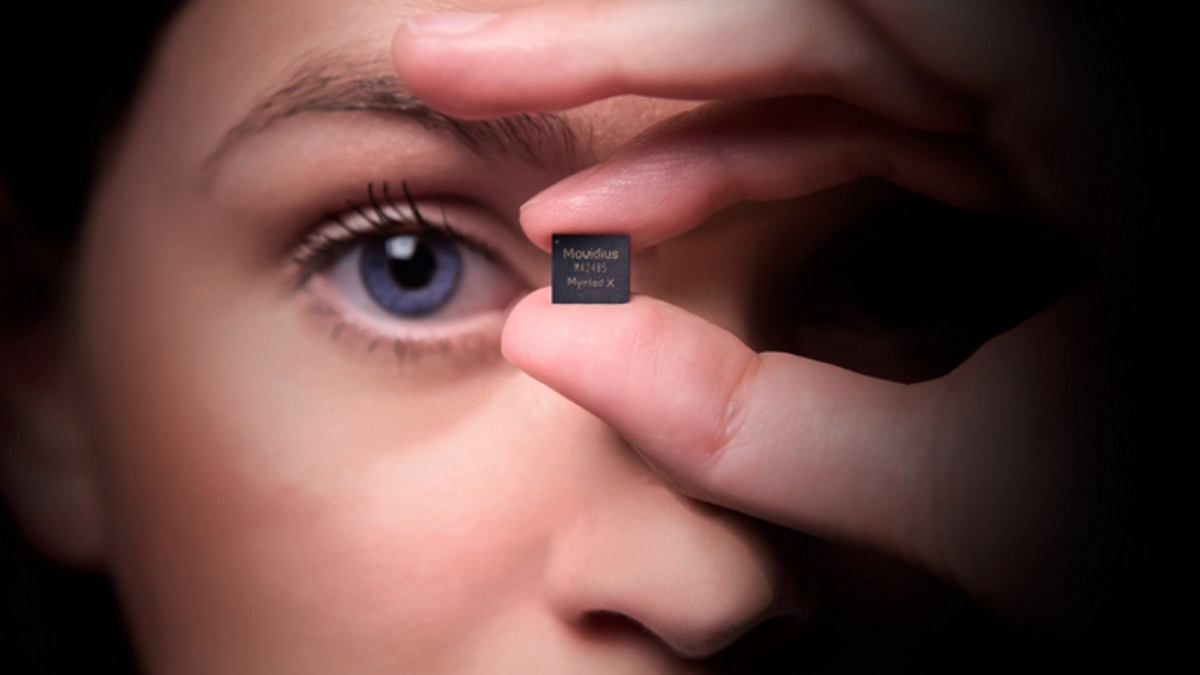Computer vision software needs hardware, and innovations from silicon manufacturers combined with Xailient Detectum are accelerating the move to AI at the edge.
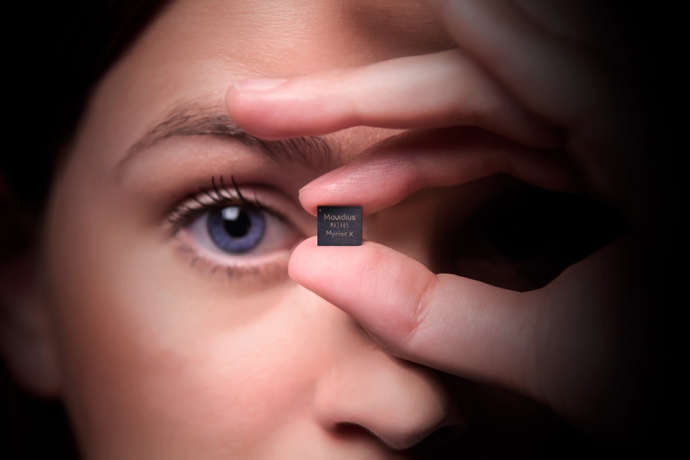
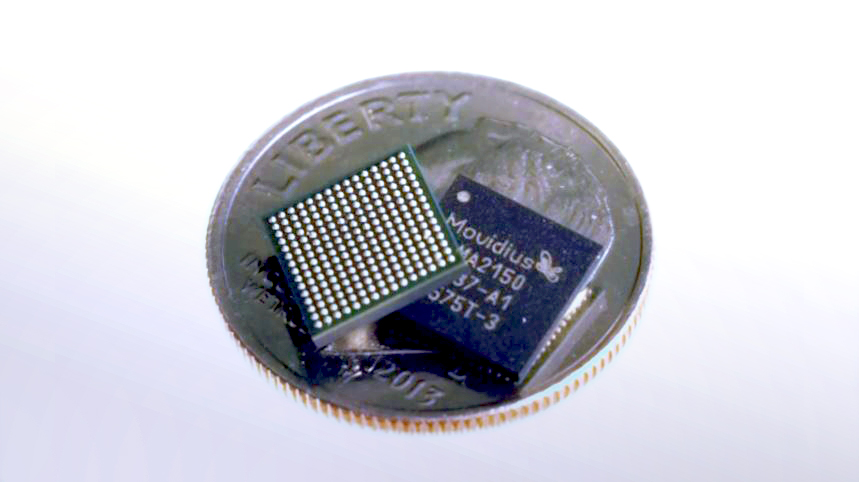
Intel Movidius™ is one leader in AI hardware innovation transforming the future of computer vision and artificial intelligence (AI). They have enabled new levels of intelligence for AI assistants, drones, robots, cameras, virtual and augmented reality, and many other devices at the edge. One example of application is an AI-powered backpack for the visually impaired to help them navigate their surroundings.
This AI-powered backpack was built using OpenCV’s Artificial Intelligence Kit with Depth (OAK-D), powered by Intel. It consists of a Luxonis OAK-D spatial AI camera, a host computing unit, a pocket-sized battery pack, and a Bluetooth-enabled earphone for providing real-time alerts and approximate location of nearby obstacles.
With the high demand placed on deep-learning-based AI on such edge devices, Intel is focusing on optimizing its processors for inferencing the machine learning models, which led to the birth of the Myriad Vision Processing Unit (VPU).
The Myriad Vision Processing Unit (VPU) is an AI-optimized chip for accelerating vision computing based on convolutional neural networks (CNN). According to Intel, Myriad VPUs have dedicated architecture for high-quality image processing, computer vision, and deep neural networks, making them suitable to drive the demanding mix of vision-centric tasks in modern smart devices.
In this blog, we introduce the Intel Movidius Myriad 2 and Intel Movidius Myriad X and compare the performance of publicly available pre-trained face detector models (MobileNetSSDV2 Face Detector and Retail Face Detector) and Xailient Detectum™ Face Detector on these two systems.
Intel Movidius Myriad 2
The Myriad 2 by Movidius, an Intel company, is a vision processing unit (VPU) that provides low-power, high-performance vision processing solutions across various target applications including embedded deep neural networks, pose estimation, 3D depth-sensing, visual-inertial odometry, and gesture/eye-tracking.
Using this same chip, Intel created Movidius Neural Compute Stick (NCS), a modular artificial intelligence (AI) accelerator in a standard USB 3.0 stick form factor. This AI accelerator is easy to use and can directly be attached to edge devices such as a Raspberry Pi. By using the Intel Movidius NCS with your existing edge device, you can deploy deep-learning-based applications on your device and get real-time inference.
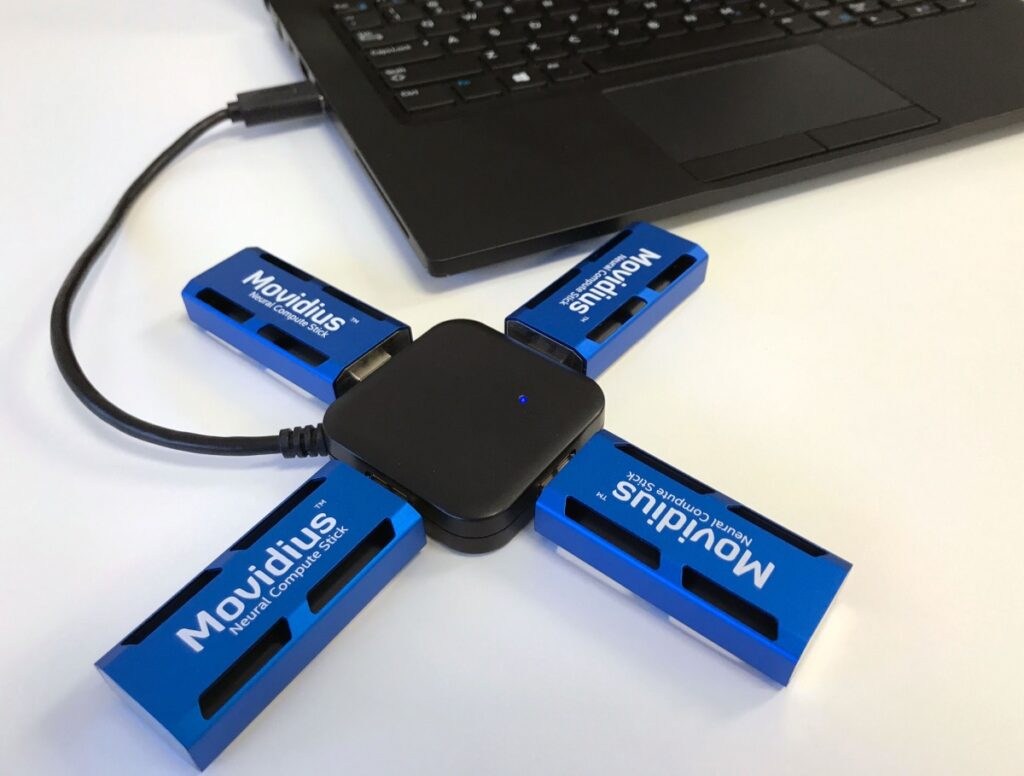
At Xailient, we did an experiment by attaching Intel Movidius NCS1 to Raspberry Pi3B+ – running two different face detectors (MobileNetSSDV2 Face Detector and Xailient Detectum Face Detector) to compare performance.
When running MobileNetSSDV2 Face Detector on Intel Movidius NCS1 on Raspberry Pi 3B+ we observed an inference speed of 5 PFS. When running Xailient Detectum Face Detector, the inference speed increased 14.8 times.

Intel Movidius Myriad X
The latest version of intel Movidius VPU is the Myriad X, which is the first VPU to feature the Neural Compute Engine — a dedicated hardware accelerator for deep neural network inference.
The Neural Compute Engine in conjunction with the 16 powerful SHAVE cores and high throughput intelligent memory fabric makes Intel Movidius Myriad X ideal for on-device deep neural networks and computer vision applications.
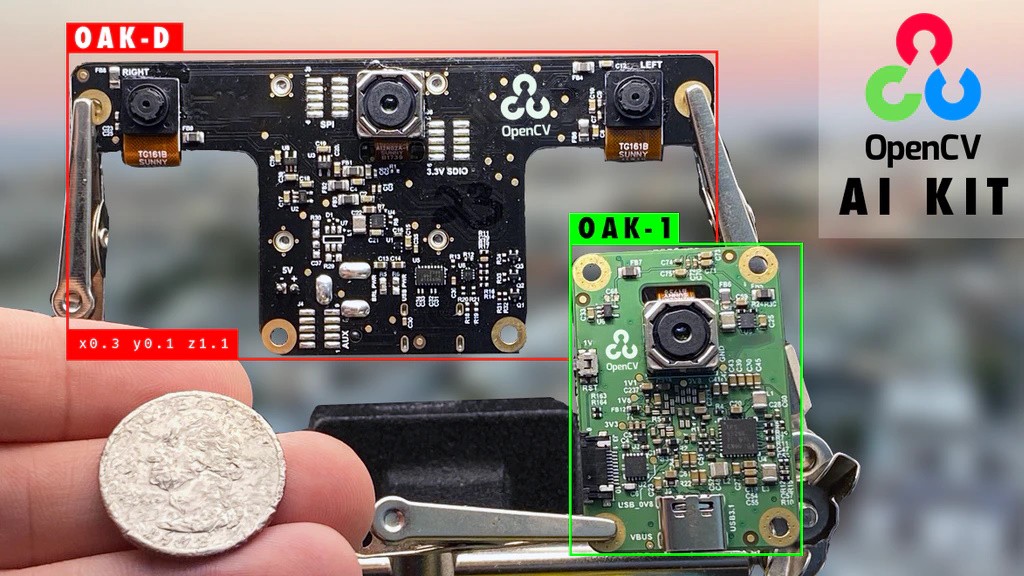
We wanted to compare the performance of Myriad X compared to Myriad 2 so we got our hands on the OAK device (The OpenCV AI Kit), which is powered by the Myriad X chip.
We observed 3 times acceleration in inference when using the Xailient Close Range Face Detector and 1.2 times speedup when using Xailient Detectum Long Range Face Detector.

The OAK board’s max FPS rate is 120FPS. In this experiment, we reached this limit using just 4 SHAVEs.
Running CV at greater than 45 FPS has diminishing value. But what this illustrates is that because Xailient’s Detectum is so efficient we leave a lot of extra capacity available for running additional models and/or processing the regions of interest that the Detectum identifies.
Xailient Detectum and Movidius
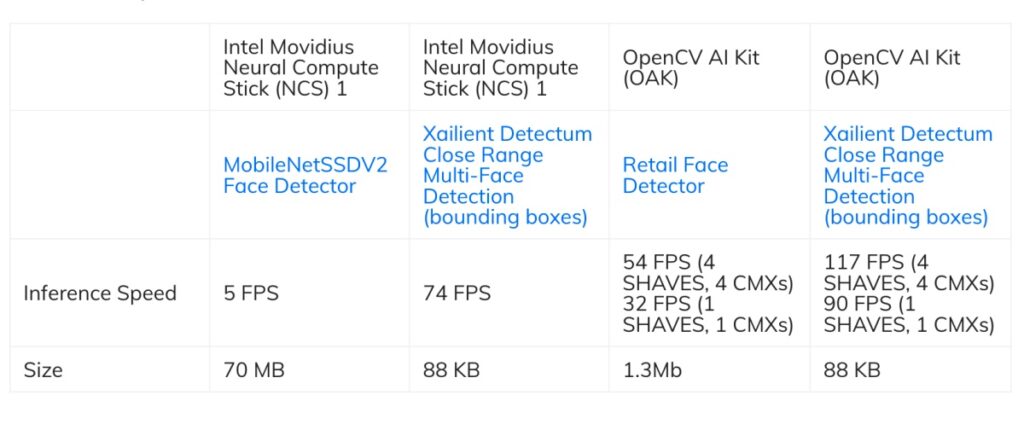
Xailient and Myriad X won the shootout, with an inference acceleration of 117 FPS. The hardware update from Intel Movidius NCS1 to Myriad X shows well in our test, with Retail Face Detector 5 times faster and Xailient’s software 1.6 times faster versus the prior hardware.
Combining Xailient and Movidius will bring greater capabilities for real-time, edge computer vision.
Additional use-cases of computer vision that require high computational power on the edge are:
- Person Detection
- Face Recognition
- Person Counting
- Car Detection
- Pedestrian Detection
- Object Tracking
- Gesture Detection and Recognition
- License Plate Detection and Recognition
The Xailient Detectum SDK for Intel Movidius is available for select customers.
If you’re looking to implement real-time face detection on a Raspberry Pi? Check out this post.
